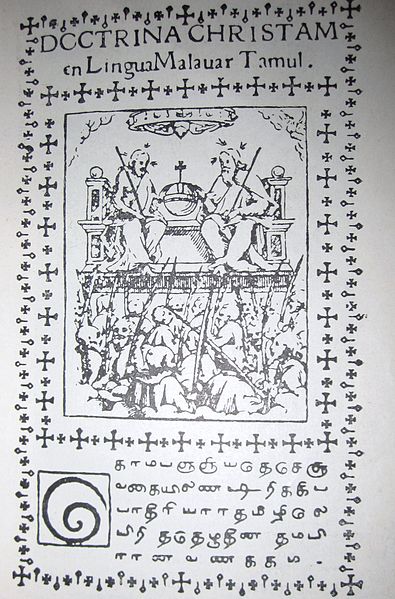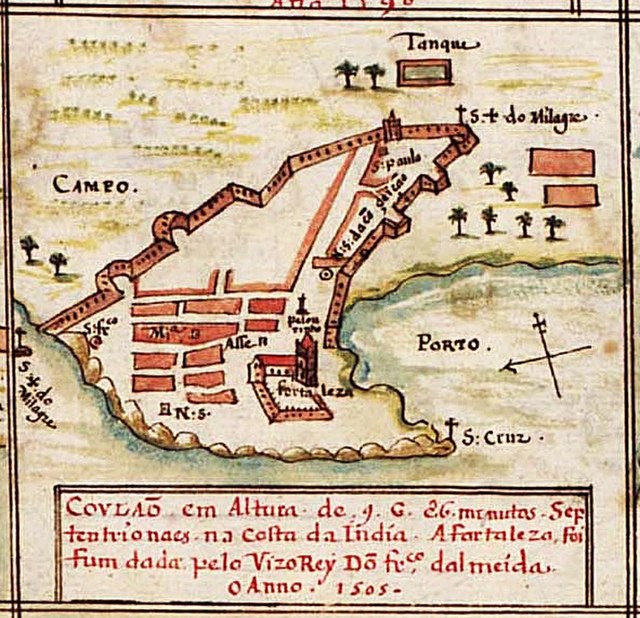Kollam Port is one of the historic ports situated 4 kilometres (2.5 mi) away from Downtown Kollam It is the second largest port in Kerala by volume of cargo handled and facilities. Located on the south-west coast of India, under the name of Quilon Port it became one of the country's most important trade hubs from the ninth to the seventeenth centuries. Kollam was one of the five Indian ports visited by Ibn Battuta.
Kollam Port
Kollam in the 1500s
Relief in Ashramam, Kollam
A distant view of Kollam Port from Thangassery harbour
Kollam, also known by its former name Quilon, is an ancient seaport and city on the Malabar Coast of India bordering the Laccadive Sea, which is a part of the Arabian Sea. It is 71 km (44 mi) north of the state capital Thiruvananthapuram. The city is on the banks of Ashtamudi Lake and the Kallada river. Kollam is the fourth largest city in Kerala and is known for cashew processing and coir manufacturing. It is the southern gateway to the Backwaters of Kerala and is a prominent tourist destination. Kollam is one of the most historic cities with continuous settlements in India. Geographically, Quilon formation seen around coastal cliffs of Ashtamudi Lake, represent sediments laid down in the Kerala basin that existed during Mio-Pliocene times.

Thambiran Vanakkam was printed at Kollam, the capital of Venad in 1578, during the Portuguese Era. It holds the record of the first book printed in any Indian language. It was written in the language Lingua Malabar Tamul, which was spoken in Southern Kerala (Kollam-Thiruvananthapuram area) during the medieval period.
Kollam in the 1500s
Capture of Kollam in 1661
Kollam in the 1700s







